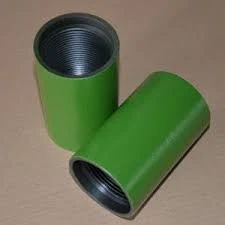- Afrikaans
- Albanian
- Amharic
- Arabic
- Armenian
- Azerbaijani
- Basque
- Belarusian
- Bengali
- Bosnian
- Bulgarian
- Catalan
- Cebuano
- Corsican
- Croatian
- Czech
- Danish
- Dutch
- English
- Esperanto
- Estonian
- Finnish
- French
- Frisian
- Galician
- Georgian
- German
- Greek
- Gujarati
- Haitian Creole
- hausa
- hawaiian
- Hebrew
- Hindi
- Miao
- Hungarian
- Icelandic
- igbo
- Indonesian
- irish
- Italian
- Japanese
- Javanese
- Kannada
- kazakh
- Khmer
- Rwandese
- Korean
- Kurdish
- Kyrgyz
- Lao
- Latin
- Latvian
- Lithuanian
- Luxembourgish
- Macedonian
- Malgashi
- Malay
- Malayalam
- Maltese
- Maori
- Marathi
- Mongolian
- Myanmar
- Nepali
- Norwegian
- Norwegian
- Occitan
- Pashto
- Persian
- Polish
- Portuguese
- Punjabi
- Romanian
- Russian
- Samoan
- Scottish Gaelic
- Serbian
- Sesotho
- Shona
- Sindhi
- Sinhala
- Slovak
- Slovenian
- Somali
- Spanish
- Sundanese
- Swahili
- Swedish
- Tagalog
- Tajik
- Tamil
- Tatar
- Telugu
- Thai
- Turkish
- Turkmen
- Ukrainian
- Urdu
- Uighur
- Uzbek
- Vietnamese
- Welsh
- Bantu
- Yiddish
- Yoruba
- Zulu
Understanding Petroleum Tubing Couplings and Their Importance in Oil and Gas Operations
Understanding Petroleum Tubing Couplings An Essential Component in Oil and Gas Operations
In the ever-evolving world of oil and gas extraction, every component of the drilling and production process plays a crucial role in ensuring efficiency and safety. Among these components, petroleum tubing couplings are vital for maintaining the integrity of wellbore systems. This article delves into the significance of petroleum tubing couplings, their types, functions, and critical materials used in their manufacturing.
What is Petroleum Tubing?
Before discussing couplings, it is important to understand what petroleum tubing is. Petroleum tubing is a series of seamless pipes that facilitate the transport of crude oil and natural gas from underground reservoirs to the surface. The tubing is designed to withstand high pressures and temperatures found in well environments, ensuring that hydrocarbons can be efficiently extracted and transported without leaks or failures.
Understanding Couplings
Couplings are mechanical devices used to connect two pieces of tubing. They not only join sections of tubing but also serve as critical points where pressure, temperature, and other environmental factors need to be carefully managed. Couplings come in various forms, and their selection is vital to the reliability and safety of the petroleum extraction process.
Types of Petroleum Tubing Couplings
1. Threaded Couplings These are the most common type of couplings used in petroleum tubing. They feature threads on both ends, allowing for easy connection and disconnection of sections of tubing. While threaded couplings provide a secure joint, they can be susceptible to wear over time, particularly in corrosive environments.
2. Welded Couplings These couplings involve welding sections of tubing together, creating a permanent joint. Welded couplings are typically more robust than threaded ones, as they eliminate the risks associated with threads. However, they require specialized skills and tools for installation and, once made, cannot be easily removed.
3. Slip Couplings Designed to allow for slight adjustments in the length of tubing, slip couplings provide flexibility in some drilling applications. They are particularly useful in scenarios where temperature variations can lead to thermal expansion and contraction of the tubing.
petroleum tubing coupling

4. Screwed Couplings Similar to threaded couplings, screwed couplings feature a male and female end that screw into one another. They offer the added advantage of being easily adjustable and replaceable, making them a popular choice in many drilling operations.
Material Considerations
The choice of material for petroleum tubing couplings is critical due to the challenging environments they operate in. Common materials include
- Carbon Steel Preferred for its strength and durability, carbon steel offers an economical solution for many drilling applications. However, it is susceptible to corrosion, requiring protective coatings or treatments in harsher environments.
- Stainless Steel Often used in offshore drilling or other corrosive environments, stainless steel is resistant to rust and degradation. This material ensures that couplings maintain their integrity over time, reducing maintenance needs and enhancing safety.
- Alloys For specialized applications, high-performance alloys are engineered to provide exceptional strength and corrosion resistance. These are often used in exploratory drilling in extreme conditions.
The Importance of Quality Control
Quality control in the manufacturing of petroleum tubing couplings is paramount. Given the high stakes involved in oil and gas extraction—where failures can lead to significant economic losses and environmental disasters—it is critical that all couplings meet stringent industry standards. Major certifications and quality assurance processes ensure that couplings can withstand the pressures of extreme drilling conditions and remain reliable throughout the life of the well.
Conclusion
Petroleum tubing couplings may seem like a small piece of the larger oil and gas puzzle, but their role is undeniably significant. The right coupling can mean the difference between a safe, efficient operation and a catastrophic failure. As technology and materials continue to advance, the development of more durable and efficient couplings will undoubtedly play a crucial role in the sustainability and safety of oil and gas extraction in the future. Understanding these components helps ensure that stakeholders in the energy sector are equipped to make informed decisions, demonstrating the importance of the seemingly simple coupling in the grand design of energy resource extraction.
-
Tubing Pup Joints: Essential Components for Oil and Gas OperationsNewsJul.10,2025
-
Pup Joints: Essential Components for Reliable Drilling OperationsNewsJul.10,2025
-
Pipe Couplings: Connecting Your World EfficientlyNewsJul.10,2025
-
Mastering Oilfield Operations with Quality Tubing and CasingNewsJul.10,2025
-
High-Quality Casing Couplings for Every NeedNewsJul.10,2025
-
Boost Your Drilling Efficiency with Premium Crossover Tools & Seating NipplesNewsJul.10,2025







